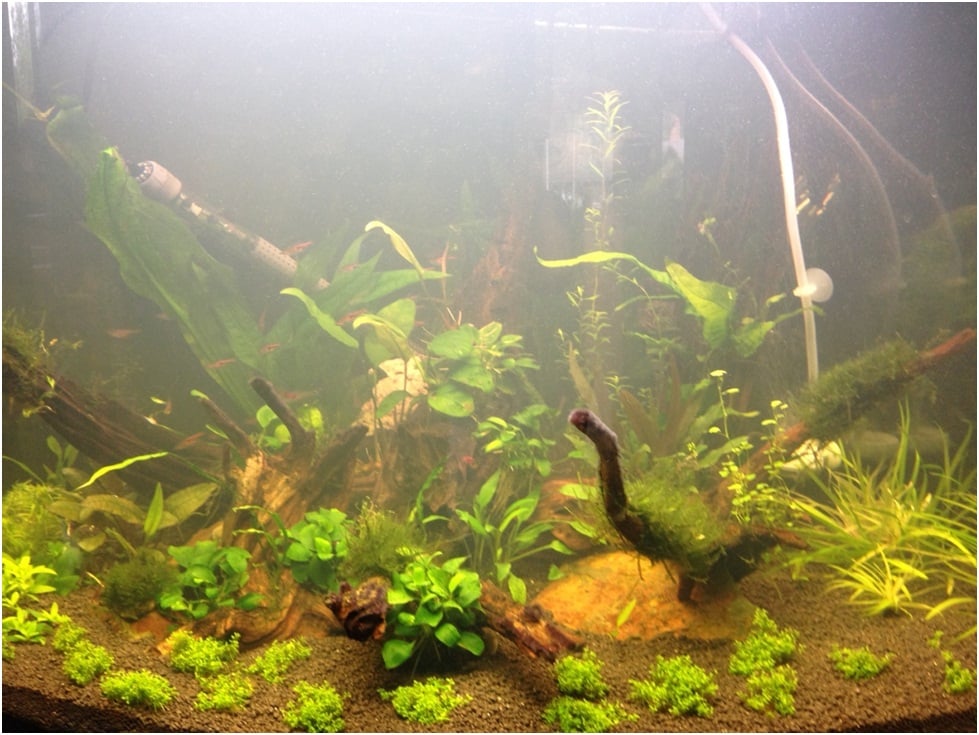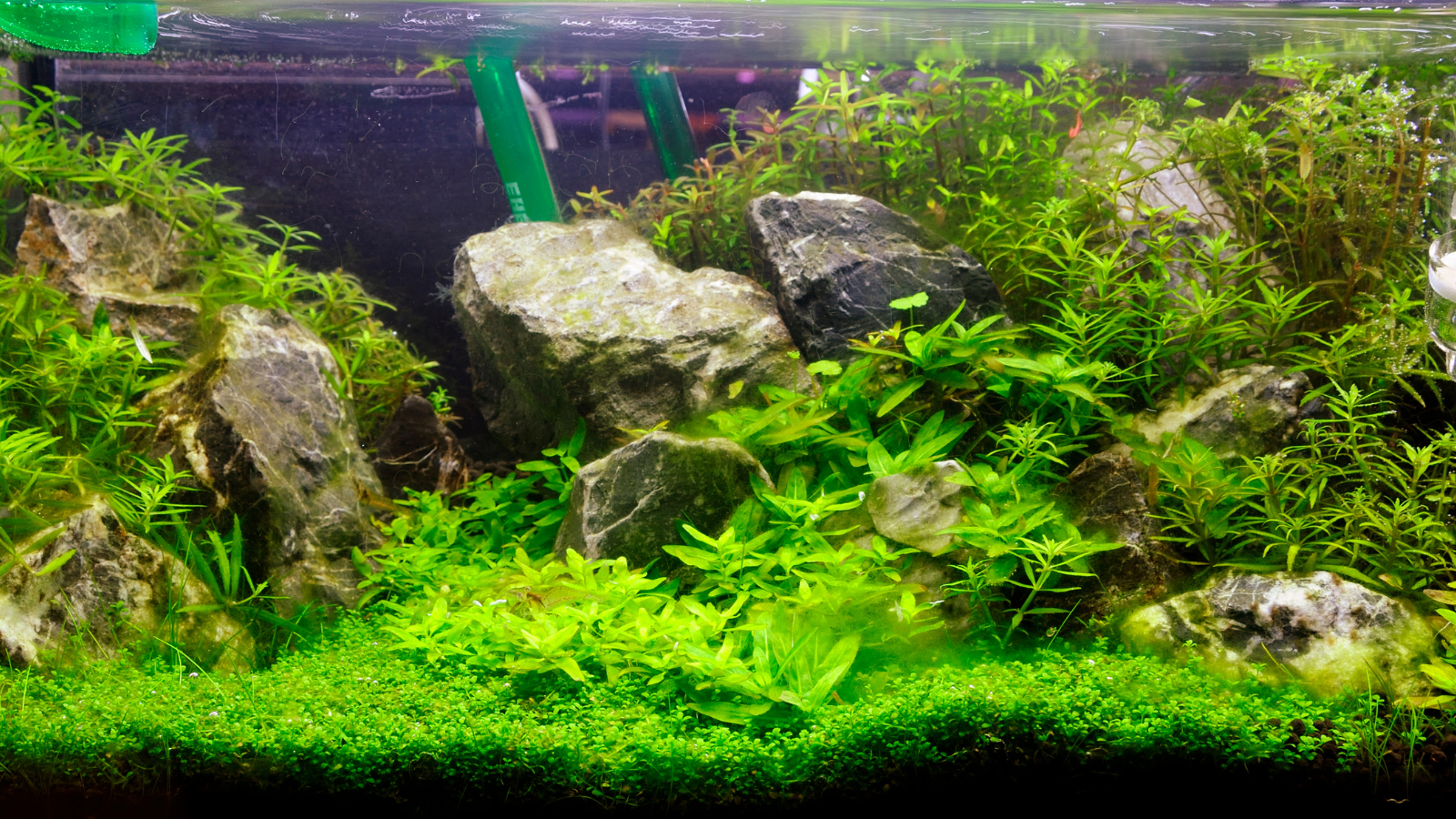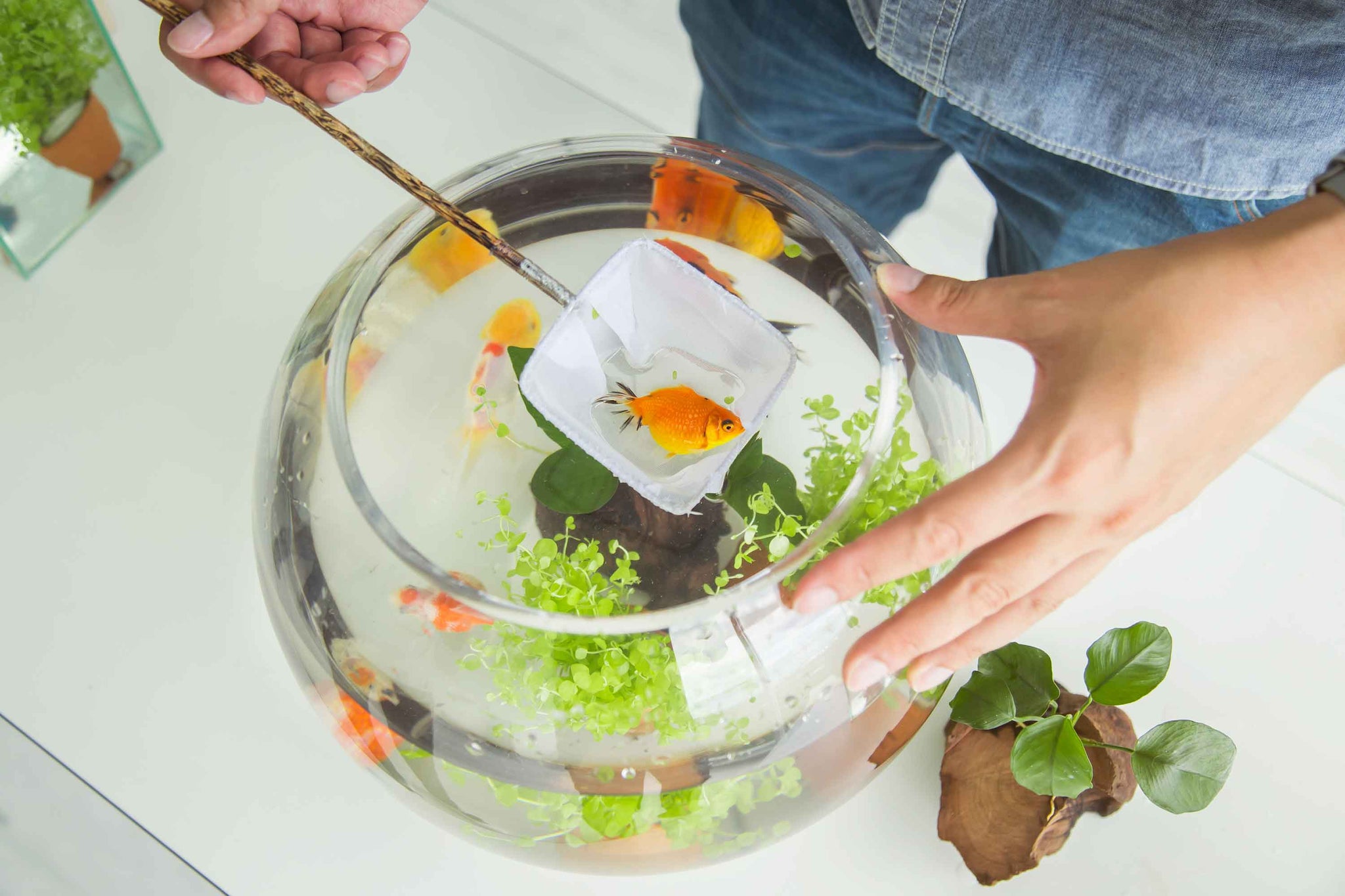
How to clear up a cloudy aquarium
Fishkeeping is a popular hobby, and a healthy planted tank filled with gorgeous fish species can transform any space. Enjoying nature in your own home via an aquarium has many benefits. However, most aquarium owners say that maintaining optimal water quality in an aquarium can be tricky, especially in a newly set up fish tank. In this article, we want to understand what exactly causes cloudy aquarium water and what we can do to fix cloudy water for good.
Aquarium water
Aquariums are micro-ecosystems, home to many different living organisms co-existing. Finding a balance is the key to a happy and healthy aquarium with many living things. For example, among the livestock in your aquarium live millions of bacteria—some good and also some bad.
Your fish tank inhabitants, such as shrimp, fish and snails, must breathe oxygen dissolved within the water column. While doing this, they also, unfortunately, For this reason, water quality is essential. Cloudy water is a clear indication of an issue with your water quality. Not to mention the foul smell too.
What exactly causes your aquarium to become cloudy?
As fishkeepers, we must not forget that we are waterkeepers too. The importance of always maintaining a healthy colony of nitrifying bacteria cannot be stressed enough. A healthy colony will help to fight against algae and protozoa by consuming unwanted nitrates and other waste products produced in the aquarium. When not enough good bacteria are present, the waste produced by fish cannot be broken down efficiently and results in a bacteria bloom. We can see this take place in the form of white-cloudy water.
Immature tank
Cloudy water in a newly set aquarium may indicate that the aquarium has yet to establish the optimum living conditions for the fish. In other words, the nitrogen cycle hasn't been completed. If this is the case, patience is a virtue. Hold off a few days, and the beneficial bacteria will arrive. Avoid any drastic water changes which will slow down the process. Good bacteria ensure there is a balanced ecosystem. Cycling to an aquarium naturally takes around four weeks. Cloudy water in a new aquarium is most commonly caused by too much waste and not enough bacteria. In our BLOG, you can learn about ammonia, nitrites, beneficial bacteria, and the aquarium ecosystem!
Enthusiastic water changes
Cloudy aquarium water can also appear after the water change. Carrying out this too often and sterilising the filter media destroys the balance and harms the beneficial bacteria development. This hinders the aquarium's ability to process waste elements naturally. This situation provides the ideal environment for protozoa.
Inadequate decorations
In particular, wood that is poorly prepared or too fresh. Also, artificial decorations on which debris accumulates can cause the water to become cloudy. Read more about choosing proper decorations for your aquarium in our recent blog!
Poorly selected substrate
The use of an incorrect substrate may be the site of putrefactive processes. Then the tank water becomes darker, tea-like.
Overfeeding the fish
Feeding animals too often or in too many amounts. The uneaten food should be treated as fish waste. Excess waste in a fish tank can mean only one thing - terrible water quality. Therefore, we highly recommend reducing the frequency and quantity of food you provide your fish.
Excess food and fish waste
Pollution in the aquarium will cause cloudy water. In addition, a neglected substrate with a detritus build-up directly contributes to cloudy water production.
Other reasons
Other reasons include the following:
-Poor water change routine.
-Inadequate filtration. Not enough flow or ineffective filter media.
Resolve the issue of cloudy water in your aquarium with some simple changes.
Add fish to the new aquarium.
Adding fish can help to develop the existing bacteria colony and increase their effectiveness in processing the bacteria causing the cloudy water. As mentioned before, allow 4 weeks to pass if cycling your aquarium naturally before adding any livestock.
Water changes
An established aquarium should perform a 20 to 40% water change weekly or fortnightly. Learn how to perform efficient regular water changes of the aquarium water with our BLOG!
Aquarium filter
Your aquarium filter must be chosen according to the size of the aquarium. When cleaning the filter itself, only use tank water to clean the filter media. Anything else will destroy the good vital bacteria living within its porous surface. To be an effective filter, it should run 24hr and never be switched off. To support the filter work, consider introducing some species from the cleaning crew. Otos, Amano shrimp or Black molly are excellent for doing this job. Moreover, they'll help you combat the algae growth and have crystal clear water.
 Substrate cleaning
Substrate cleaning
Remember to de-sludge the bottom from gravel or coarse sand when performing the water changes. Care is being taken when using plant soil substrates. Replacing fine sands with larger grain sand of 2-4 mm. This will provide the ideal surface for more beneficial bacteria to colonise. The substrate should not reach about 5-7 cm in depth.
Feeding
Excess food will cause cloudy water in the fish tank. An adult fish only requires feeding once or twice a day. Always ensure the food is eaten within a few minutes. Afterwards, remove the leftover food to prevent unwanted issues.
Maintaining healthy live plants and clean hardscapes.
Hardscape materials such as wood and stone should be checked regularly for any deterioration. This also applies to live plants. If leaves are left to rot, they can develop into problems. Rocks or stones must be checked for dirt accumulating on the surface. If left too long, water chemistry can be affected.
Green water in the aquarium
The water colour in the tank may also turn brown or green. A cloudy substrate will cause brownish water. To resolve it, carefully remove the top layer of the substrate while doing a water change. The application of filter wool inside your filter is helpful here.
Although unicellular algae can be responsible for green water, cloudy tank water can also be caused by:
-Incorrect lighting. Too strong for too long!
-Lack of sufficient filtration.
-Direct sunlight throughout the day.
-insufficient substrate de-sludging,
-Inaddequete water changes
Algae, alongside protozoa, may appear in an immature aquarium deficient in nitrifying bacteria. As the tank water matures, aeration is critical as the algae take up a lot of oxygen. Leaving less for livestock.`
To combat the problem of green water in the aquarium, it is also worth turning off the light or reducing the lighting time. Usually, this will be enough for about three days. After this time, the problem should disappear. You should also remove the tank from the window and change the tank water, taking care of efficient biological filtration. Cartridges to eliminate floating algae growth can also be used in the filter.
Special preparations can be adequate for green, cloudy water, including a particularly powerful skimmer. However, with heavy blooms, it is worth using an ozone generator. In its absence, you can use a hefty dose of activated carbon with an active water flow. Lowering the water to 79 degrees Fahrenheit is also a good idea.
Cloudy water is caused by mechanical factors.
It occurs when tiny undissolved particles in the tank water are too small to stay on the filter sponge. In turn, the constant movement of the water makes it cloudy. Usually, this problem occurs in new fish tanks where, for example, the new gravel has not been rinsed well.
In this case, you can replace all the tank water, which requires a lot of time. Therefore, it is better to insert a particular cartridge made of dense wool into the filter. It will catch floating particles. You can also partially change the water until it becomes clear.
How to avoid cloudy water in the fish tank?
Never introduce fish into the fish tank before it has had time to establish a sizeable colony of beneficial bacteria. This can lead to problems and even the death of your new fish. When fish, The water becomes cloudy with the growth of aerobic bacteria, which causes the amount of oxygen to drop. In this way, they deprive the fish of the chance to breathe freely when the water is silted.
Water testing with aquarium tests will let you know what you are dealing with and when to introduce the fish. After checking water parameters such as NH4 and NO2, it is possible to see when the filter has been touched and when you can start adding fish.
To find out if you have too many fish in your fish tank, check NO3. As much as the test shows nitrogen compounds, you can have as many fish.
In most cases, the aquarium water is cloudy because of natural causes, so it's best to get rid of them by natural methods. It is also worth performing regular water changes and examining the water parameters to keep your fish happy and healthy. They will surely reward you with a fantastic decoration like a well-maintained aquarium.



